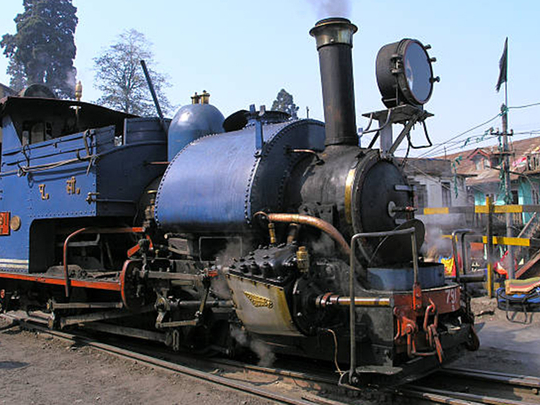
Train journeys used to be fun. Never mind the minor inconveniences. There was a romance to it.
There was a time when I had to crane my neck over the jostling crowd to see the railway reservation charts, to find out the coach and berths allotted to us. When the rake arrived at the platform, copies of the same charts were pasted near the entrance of the coaches as passengers scurried to locate their names. (The practice continues even today.) Sometimes the coach would be near the engine, but when it is at the tail-end of a 21-coach train boarding with your luggage was difficult.
Once you are inside the train, other hazards stare at you. Bottled water had not made its appearance. Drinking water had to be fetched from dirty taps located on either side of the platform. While you vied with others to place your flask or utensil under the running tap, your eyes were on the train lest it chugs away leaving you stranded at some unfamiliar station. Inside the coach, your wife she frantically tries to locate you through the window and shouts for you.
Many of us must have gone through such experiences in the not-too-distant past. But this would sound strange to the new generation. Things have changed vastly. The Indian Railways has come a long way. A big transformation has taken place. Thanks to the internet, the pace has been rather fast.
Today, tickets can be booked through the internet. Only those deprived of the facility need to queue up at the counter to buy tickets.
Decades back when there were no reservations, the job was done by the coolie (porter). He would climb on to a compartment even as the rake was being moved from the yard and place his scarf on a berth “reserving” it for you, of course for a price. Nobody could displace it.
Jumping the queue
Before the advent of the internet, we filled up forms seeking reservation of seats/berths, queued up at the counter, often fighting off those who try to jump the queue, and came back relieved after collecting our tickets. Senior citizens and women gave vent to their grievances and frustrations.
The reservation charts used to handwritten and were illegible and had misspelt names, often giving a harrowing time to the passengers. Mercifully, later typewriters made things easy.
If you were not carrying your homemade food, you had to get down and walk up to the nearest food vendor’s trolley, hurriedly buy your stuff for the family and get back before your panicky kids shout through the window grille.
Today, that hassle is a thing of the past. Now, vegetarian and non-vegetarian food is available in all major trains through pantries. You don’t have to go out. You get the desired food right at your seat with a dessert, along with bottled mineral water. In most cases, meal charges are included in the fare and collected at the time of buying the ticket.
The earlier era had two striking features — the steam engine and the kullhar ki chai (tea served in earthen pots), which is treated with ginger and clove. The aromatic earthen cup became a casualty of time. Not being cost-effective, it has been replaced by plastic and paper cups. The old steam engine had its charm. Its whistle was reproduced by kids while playing ‘the train’. It inspired songs in Bollywood films. The smell of the steam mingled with smoke gave passengers the real feel of rail travel.
With the withdrawal of the ‘iron horse’ as it was nicknamed, all that is a thing of the past. However, a few mini trains including Kalka-Shimla and the Darjeeling railway keep the romance of the steam engine alive.
From slow-moving passenger trains, we have come a long way moving towards the goal of having a bullet train. But the spoke in the (railway) wheel is India’s ever-growing population, which hampers the delivery of improved quality of services in the sector.
Lalit Raizada is a journalist based in India.









